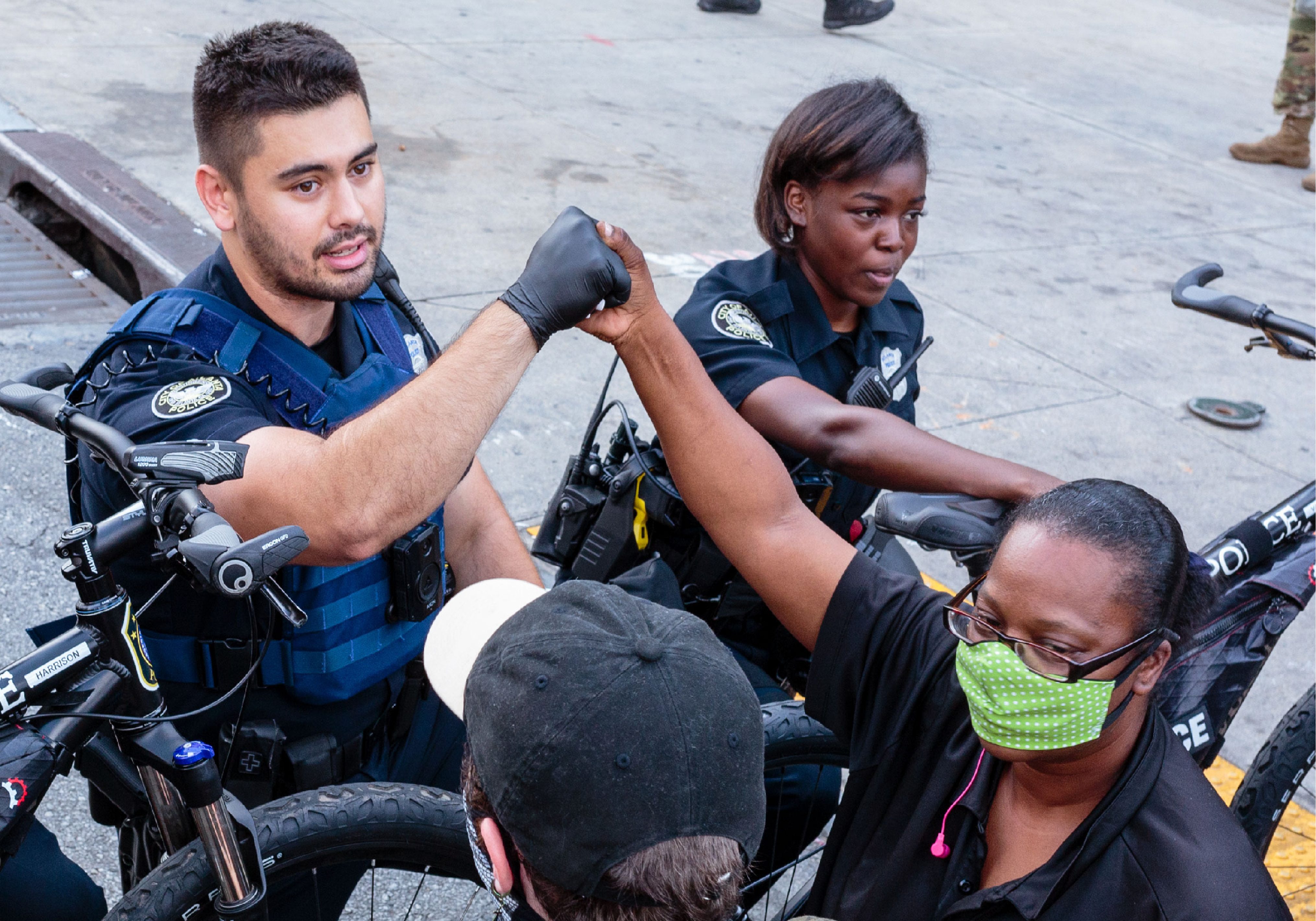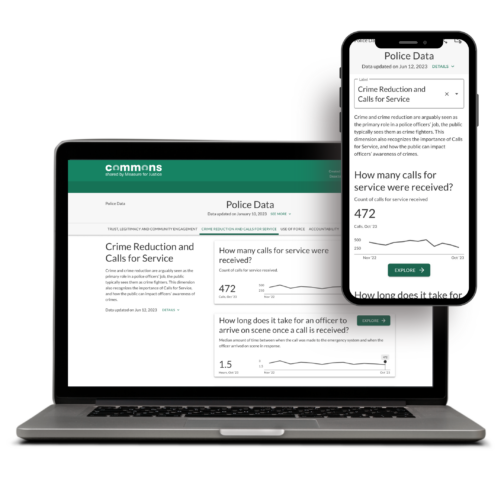What We Measure
Below, you’ll find the broad categories of policing we evaluate, as well as the specific Measures that fall under each of those areas.

Policing in the United States is under scrutiny. Some people think it can’t be saved and needs to be abolished. Others cite rising crime rates as a reason to double down on shoring up the police.
We believe the best way to enable communities to reshape a system is to help them understand as much about it as possible, through a rigorous, holistic overview of all the system’s moving parts. And the way to do that is with readily available and easily understandable data.
To achieve this, we’ve developed a national set of Police Measures with input from community leaders and police departments. We are piloting these measures in two communities, with the West Sacramento Police Department in California and the Rochester Police Department in New York.

Below, you’ll find the broad categories of policing we evaluate, as well as the specific Measures that fall under each of those areas.
These Police Measures will soon be available in our Commons platform, a community-driven data tool that helps shape criminal justice policy. You can learn more about Commons and how it works here.


A national, standardized set of Police Measures will help us evaluate key areas of policing, including trust in the department and perceptions of legitimacy; use of force; least harm practices; accountability; officer wellness and safety; fiscal needs and responsibility; recruitment and training–all based on the premise that you cannot solve for one issue in policing without measuring and understanding all the factors that contribute to that issue.
Measures for Justice began to develop a draft set of Police Measures in 2019 by convening a Policing Council. The Council is a senior advisory group of some of the most experienced minds in policing in the United States. It was chaired by Laurie Robinson, a policing scholar and former co-chair of the White House Task Force on 21st Century Policing, 2014-2015.
“Public trust in law enforcement is critical in a democracy. But at a time when that trust has been shaken nationally by highly-visible events, I applaud creating multidimensional police performance measures in a collaborative process with both law enforcement leaders and communities.” – Laurie Robinson
We also worked with community leaders and organizations across the country to understand what aspects of policing need to be measured alongside what policies. Part of this effort included convening a Roundtable on Improving Data for Racial Equity in Policing co-hosted by the Center for Open Data Enterprise (CODE). The Roundtable explored the use of data in the various dimensions of policing we identified, reviewed existing data sources, gaps, and challenges in the relevant data, highlighted high-priority use cases of data application, and identified opportunities to improve data and put it to better use.
All of this work has culminated in the Police Measures that will serve to provide a holistic view of policing in communities across the country. As of 2024, we continue to work with our two pilot communities, the West Sacramento Police Department in California and the Rochester Police Department in New York, to publish these Measures publicly and work towards a more transparent, accessible, and accountable policing system.